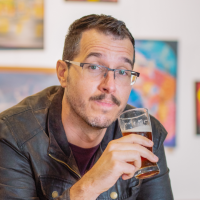Between the rapid growth of the Australian beer scene, and the fact this Great Southern Land of ours is stranded like a runaway lost at sea, we can sometimes get stuck in our beer bubble. There’s so much going on in our own backyard that we don’t always look outside of it to see what’s happening in other countries.
Reading articles on the internet is a start, and traveling to other countries to explore their breweries and bars is priceless when we get the chance. But luckily for us, we also get some of the best beers from around the world airdropped on our doorstep, and the brewers of some of these beers often make their way to our sunburnt country for events such as Good Beer Week.
When Stephan Michel flew in for Good Beer Week this year, he didn’t cause as big a splash as some. But keen observers will know that this brewmaster makes some of the best lagers in Germany, which logically makes them some of the best in the world, a claim given credence by the Champion Medium International Brewery trophy at the 2018 Australian International Beer Awards and further success at last year's World Beer Awards. Mahrs Bräu has been owned by Stephan’s family for more than 100 years (although the Bamberg brewery itself dates back further than that), and their fiercely loyal fanbase includes third generation customers.
But this isn’t a brewery stuck in the past. Mahrs Bräu is on cusp the of a new wave of drinkers in Germany. Historically, German beer culture has often involved swilling a lot of beer very cheaply, but Stephan is finding that people are starting to come around to paying more for higher quality beer.
“I’m already the expensivest beer in town. But my customers are not heavy users like in the past," he says. "They’re more like, what do you say, flavour consumers.”
Compared to many other countries, Germany doesn’t have a strong craft beer market, and Stephan doesn’t consider his beer “craft”. But his lagers hold a strong position in many New World markets, whether that’s in craft beer bars in Italy, Mikkeller bars across Europe, or in the United States, where his beers are taking off.
His beers are now available in Australia too, thanks to Experienceit, the distribution company run by Kerrie and Johnny Latta, who also own Sydney’s Nomad Brewing.
“Our experience with lagers is that they are definitely increasing in popularity,” says Kerrie, “but I’m not sure if this is from a true appreciation of great lagers, like Mahrs, or just an easy-drinking – sometimes cheaper – craft alternative.
“Bringing Mahrs Helles in to Australia hasn’t had the impact of the DIPAs and so on from other producers, so there’s still a way to go with educating about what a great craft lager is.”
Brewers the world over seek to collaborate with Stephan, but he’s selective about who he’ll brew with – he reserves that privilege for his “closest friends” in the industry. Since that circle now includes Kerrie and Johnny, they invited him to pop up to Sydney after Good Beer Week to brew a collab beer with their brewery team: a small batch that would play to the strengths of both breweries.
Mahrs Bräu are known for their lagers, Nomad for using native Australian ingredients, so they got one of the latter's regular food trucks to smoke some pilsner malt with Australian Ironbark, and proceeded to brew a smoked lager with Vic Secret and Galaxy hops – using a barrel as a mash tun, because why not?
Mick Wust joined them on the brew day to chat with Stephan about the place of lager in a craft beer market, how the smell of air changes the taste of beer, and the differences between the modern German beer drinker and the modern Australian beer drinker.
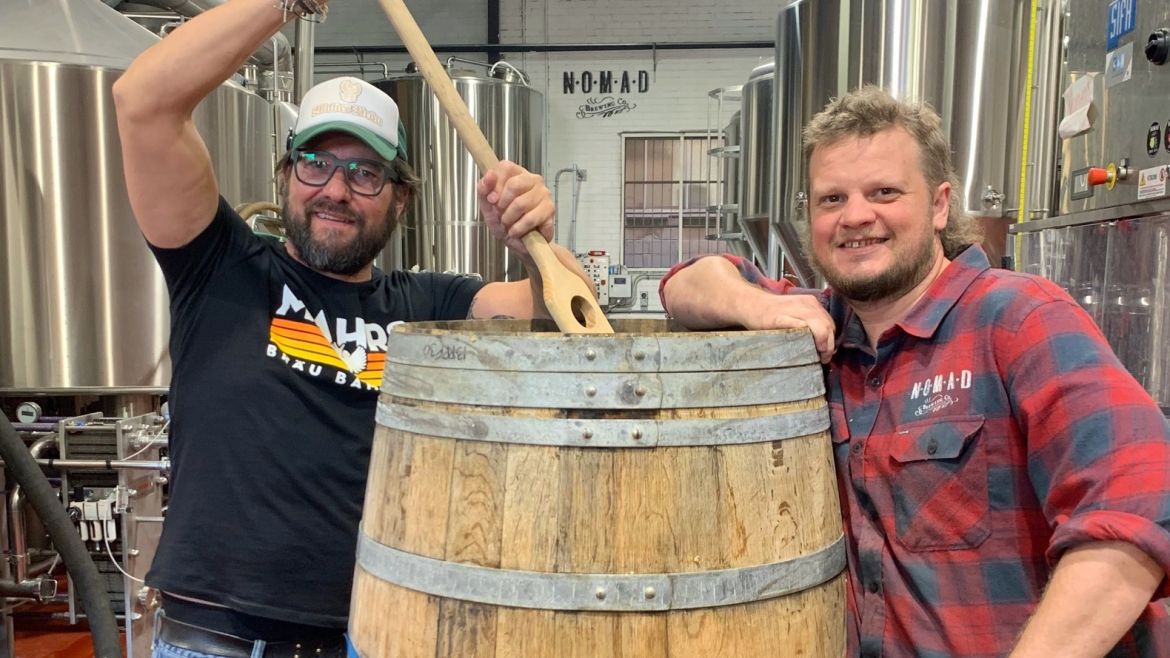
On simple pleasures...
Stephan Michel: There’s a lot of people asking us to collaborate right now, because lager is getting more and more famous. I was in Copenhagen before I came here, with Mikkeller, and all those guys there are like: “Can we brew lager with you?”
But I don’t want to wash out my brand and show everybody what we do. We can do it with our closest friends.
Like, after here, I fly to do a collab with Firestone Walker, also for a lager; this is my sixth year. And when you see Firestone right now, 805 (IPA) is the core beer, 50 percent of the whole volume they sell. Then next biggest is their lager. Only after that is some barrel-aged stuff.
Because there’s too much beers out there in America, you know? Too much strong beers, and people looking really for low ABV. Everybody wants to have low ABV, 4 percent, or 4.5. Maximum 5, or 5.5, but not more. Same with Germans. They drink a lot – when we do a festival in the brewery, my backyard is 25 to 50 metres, it starts ten in the morning and it goes to two in the afternoon, and they drink plenty of beer. But they all want not strong beers, lower ABV.
Mick Wust: Well, that’s what Australia’s gone through too. Because Australia has always been low alcohol lagers. And then when craft beer came in, we all got really excited, and went as big as we can. And now it’s starting to level out, as people are realising that they can’t just drink that all the time.
SM: My beers are in Fob [a craft beer bar in Italy] since like five years: tap number one, number two, number three. They never change it. All the other beers is like craft beers, they change it. But they say: “We need a lager for all the craft beer drinkers, that they can get a beer between”, you know. Like to come down again.
That’s why I say I’m the toothbrush! *laughs*
MW: The tongue scraper.
SM: To make the flavours clear again. We do most of our beers with single malt and single hop, we like very clean stuff, and very balanced… not too much craziness in it.
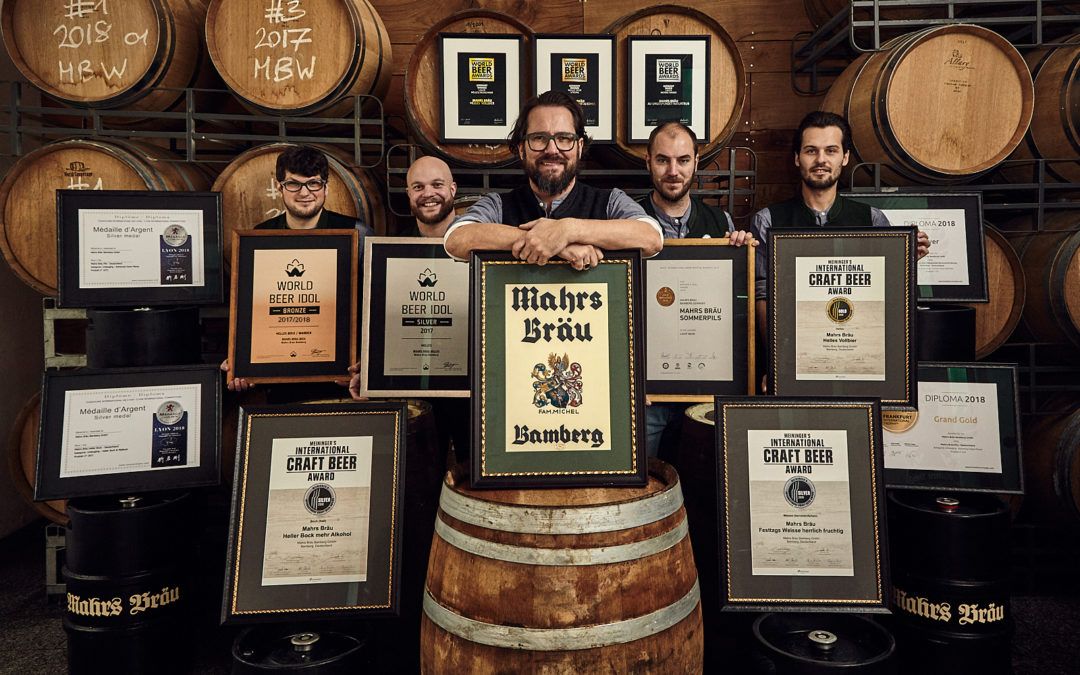
On collaborations...
MW: So how much of your market is in Germany versus export?
SM: I say like 15 percent export, 85 percent local. And mostly in my area, like 50km around the area, or 100km. Mikkel [of Mikkeller] does his own distribution… and it’s good for me, because he takes me to all his places on draught. He says we need a good lager beer, Helles, on draft.
They say: "We do the other stuff better. You do better lagers.”
And for me it’s the same. I have no clue how to do all the other stuff, because I never was into it. I mean, I like to drink lagers. And the Stone & Wood Pacific Ale, I like it, because it’s very thin, very easy to drink, with the fruity yeast – he has a very good yeast strain, I think, makes it very fruity. That’s the only ale, actually.
We’re starting in the wintertime doing an exchange with Stone & Wood. They send a brewer up to Bamberg, and I send my brewer down to Byron Bay. So they will show him some experience in Australia, and we show the guys how to do German lagers.
MW: It makes sense though – with Mikkeller, and with Stone & Wood. If you’ve got your specialty, rather than trying to make everything under the sun, to do what you’re good at. That sounds like a great partnership.
SM: I do collabs, like the New Zealand Pils with Yeastie Boys, everybody said that’s cool. And then we can say we make some craft stuff. But normally you stay [at our venue] for lagers. And this is what people know about Mahrs. And I don’t want to change it.
And we have, in Bamberg, another brewery, outside of Bamberg, he has already eighteen different types of beers. And people think: “Is this guy crazy? What do you need eighteen different beers for?”
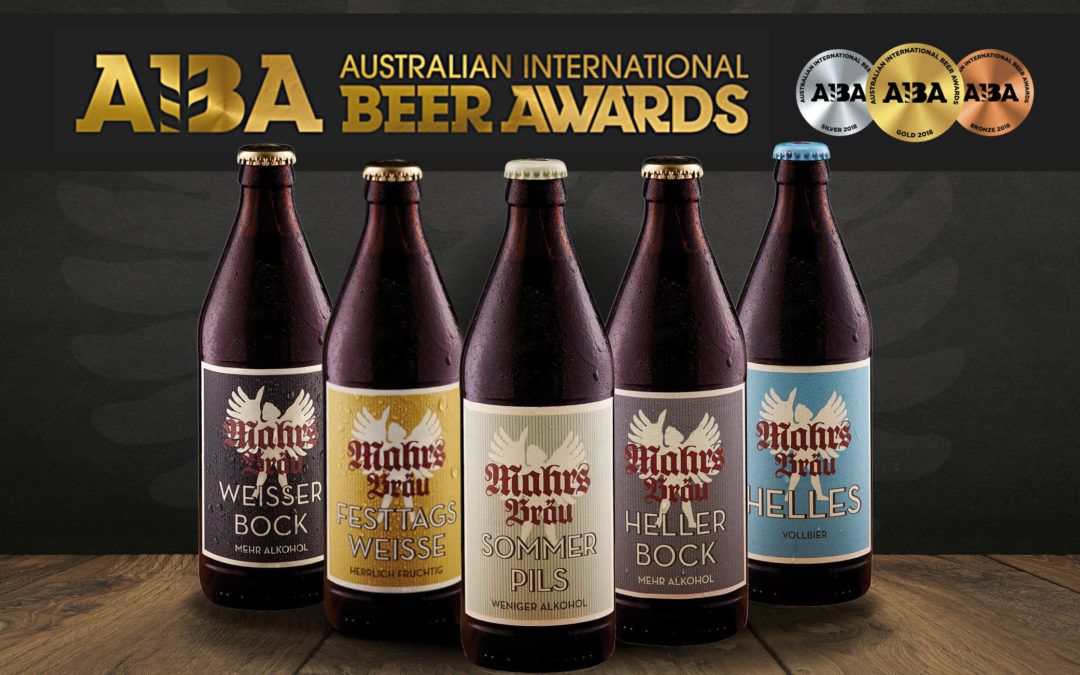
On loyalty and locality...
SM: Germany is very good, because German people are very loyal to the brand. For us, we’re selling third generation to the customers.
MW: Germany has got this very old beer tradition. For Australia, it’s young. There’s a lot of people still pulling away from the big brands, and away from the big lagers…
SM: Same with Germany.
MW: …but there’s not much of knowing what we’re going towards. We’re still finding our feet.
SM: In the past we had, I think, eight regular beers, and then all the seasonals. But I pushed it back down to about two core beers: there’s my U beer, and my Helles. And people are fine with it.
They never ask me: “Can you do this?” or: “Can you brew that?” They never ask me. They’re fine with those two beers, and they say: “Make two good before you make eight that suck.”
But we’re looking mostly for the local market. My thing is there are so many breweries that start traveling first before they do their homework, but you have to be strong at home before you go traveling. When you’re not strong at home and you travel, and this disappears, then you have a problem.
So that’s why I try to keep my beer in the area strong, and be the number one.
On cracking the New World...
MW: So what do you think that’ll look like in somewhere like Australia? Because we have so many cheap German beers here…
SM: That’s what I want to see. That’s why I want to be better. To show the people that you can also drink good German lagers. There’s not just the cheap lagers, there’s also good lagers.
It’s a long way to change the minds, but when I do collabs with other brewers it helps, like with Sierra Nevada, they have already a reputation, so then people listen.
They say: “Oh, they do a collab with a German brewer? Why?”
And then they can say: “Because this is one of the best brewers of lagers in Germany.”
And Australians love Germany. They love to go to Germany. Australians travel a lot.
MW: We’ve got a lot of money.
SM: And they all love Germany, and they all go to Oktoberfest, and all this kind of stuff…
MW: But, like you said, it’s very much going to be about changing the opinion of what German beer is. Because, for us, drinking German lager is very much about drinking as much as possible, in the same way that people used to drink a lot of Australian lager.
SM: And this is why we say like Oktoberfest is not the best marketing for good beer, you know?
But, yeah, I would like to grow here working by mouth. So that people say: “This is a good beer. You need to try.” Have people talking about it, podcasts helps, some other stuff helps. Everything what is around to explain about lagers helps also not just the German lager industry, perhaps also the Australian lager industry and the UK lager industry. Because we have history.
We’re a lager country. Australia, UK, Germany… they’re all lager drinkers.
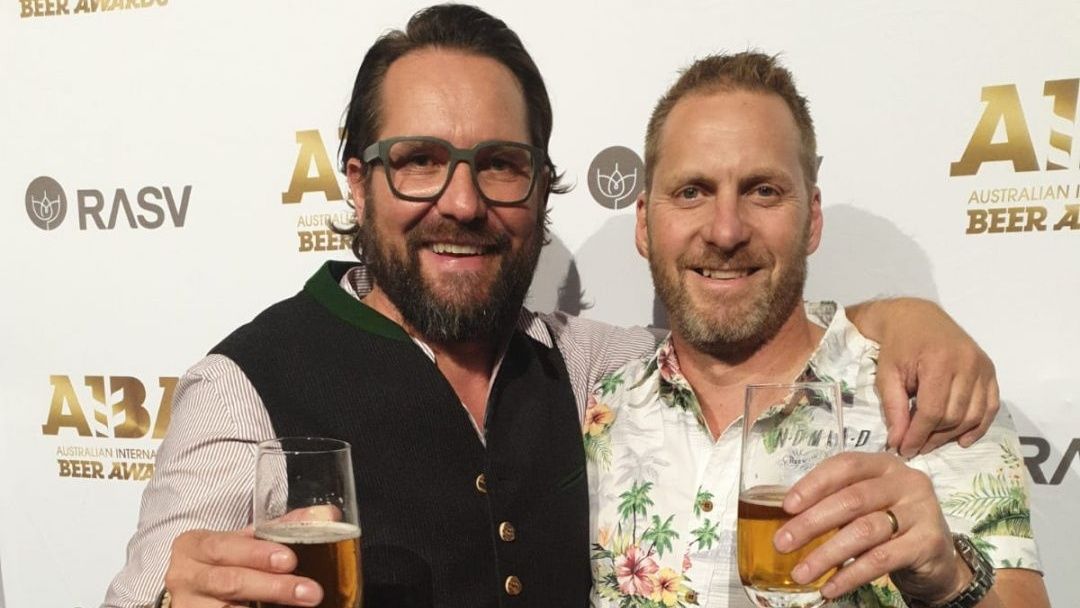
On climate change...
SM: Yesterday, they had all my beers at the event, and all the brewers just said: “Oh, clean beer. Super clean. Super balanced.”
MW: Yep. Brewers appreciate good lagers.
SM: And they wanna know how you do this, how you do that, and I said: “I tell you. I don’t have a problem with that.” *laughs*
MW: “You’re not my competition.”
SM: No, you’re not my competition. Because even when I give them the recipe, his beer will taste different to mine.
MW: Different water?
SM: Different ingredients.
MW: Different temperatures, different climate, even.
SM: Everything. Even… every country smells different. Every city smells different. And then it tastes different, the beer.
So, when I drink my beer at home, it tastes different. When I bring the same beer here, or after a 12 hour flight to LA, and drink it out there, it tastes totally different.
MW: Really? I’d never thought of that before.
SM: It’s the same beer, but the air smells different. And that affects your flavour nodes. That’s why people, when they go to the mountain, drink wine, they say: “Oh, the best!”
Then they buy the wine, they bring it home, and they’re like: “Huh? I think something is wrong with this wine.”
No, it’s the air, it’s important. You have fresh, clean air, your flavour things are not blocked.
MW: Is Bamberg a very clean city?
SM: It’s a clean city, yeah. Franconia [the region] is very green, we have a lot of woods. Every town smells different. I know New York smells different to LA, because you have different trees. Same with here, I think Byron Bay smells different to Sydney, different trees… different everything. Not a lot of people think about that, but it really affects you.
MW: So you know what you have to do next time you send beer to Australia? Send a big jar of Bamberg air with it, so we can open it, smell Bamberg air, then drink Bamberg beer.
SM: *laughs* Yes, I’ll do that next time for sure.
For more crafty discussion on lagers, read this in-depth article from last year where we talked with some of Australia’s leading brewers about the rise of craft lagers. And for more on Bamberg, check out this travel piece.



